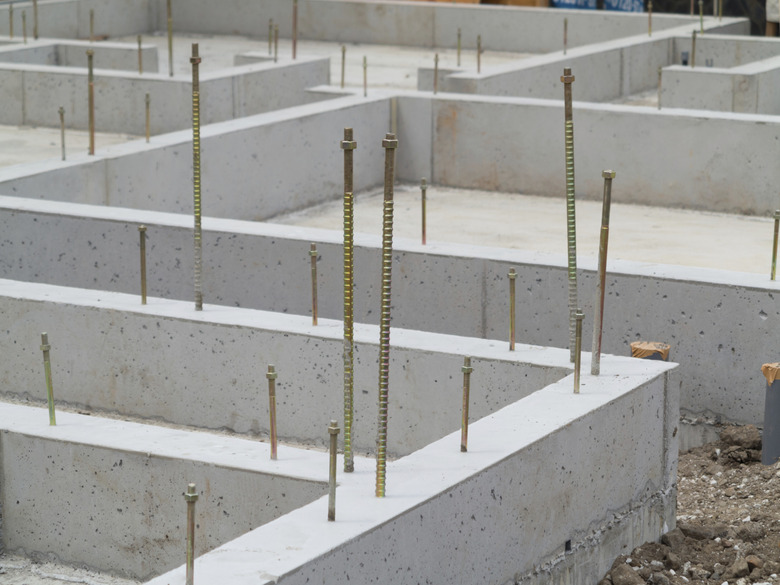What Type Of Caulk Is Used When Caulking Your Sill Plate?
A house's sill plate represents the transition between masonry and wood. Once the foundation forms are stripped, the sill plate fits directly on top of the concrete wall. During new construction, local building codes may require the addition of a sill gasket, which is typically a thin layer of vinyl, rubber or polyethylene foam. Unfortunately, sill gasket products didn't come into widespread use until the 1990s, and homes built prior to sealant regulations can suffer from gaps and air leaks between the sill and the foundation.
Caulking Types
Caulking Types
Flexible foam sealant, designed for use on both wood and masonry, is the best type of caulking for sealing the sill plate. Latex caulking can harden and crack, and pure silicone caulking can pull away from the masonry if it becomes wet. Look for a sealant labeled "minimal expansion." The sealant is available in heavy tubes that fit in standard caulking guns.
Interior Sill Caulking
Interior Sill Caulking
The best place to caulk the sill is from inside the basement or crawl space. The sill plate is just above the top of the foundation wall, and you'll find a concrete ledge, about 2 1/2 inches wide, before reaching the sill plate. The crease between this ledge and the edge of the sill plate is the best place to apply the sealant. After brushing away loose bits of debris or dirt, apply a continuous 1/2-inch bead of flexible foam sealant in the crease.
Exterior Sill Caulking
Exterior Sill Caulking
Caulking the outside of the sill plate is more difficult because the home's exterior boxing fits flush with the bottom of the sill plate, and the siding generally extends about 1/2 inch below that. Without prying the bottom edge of the siding up, which may not be possible with some types of siding, you're limited to blind application because you can't actually see the seam between the sill plate and the foundation. It's essential that any flexible foam sealant you use in this area expand very little or it could push out the bottom of the siding.
Additional Measures
Additional Measures
Wear gloves, long sleeves and protective eyewear when applying this type of sealant. In addition to sealing the interior sill plate, you can install flashing between the bottom edge of the siding that covers the seam between sill and foundation. This is especially helpful if water is leaking in under the sill plate.
